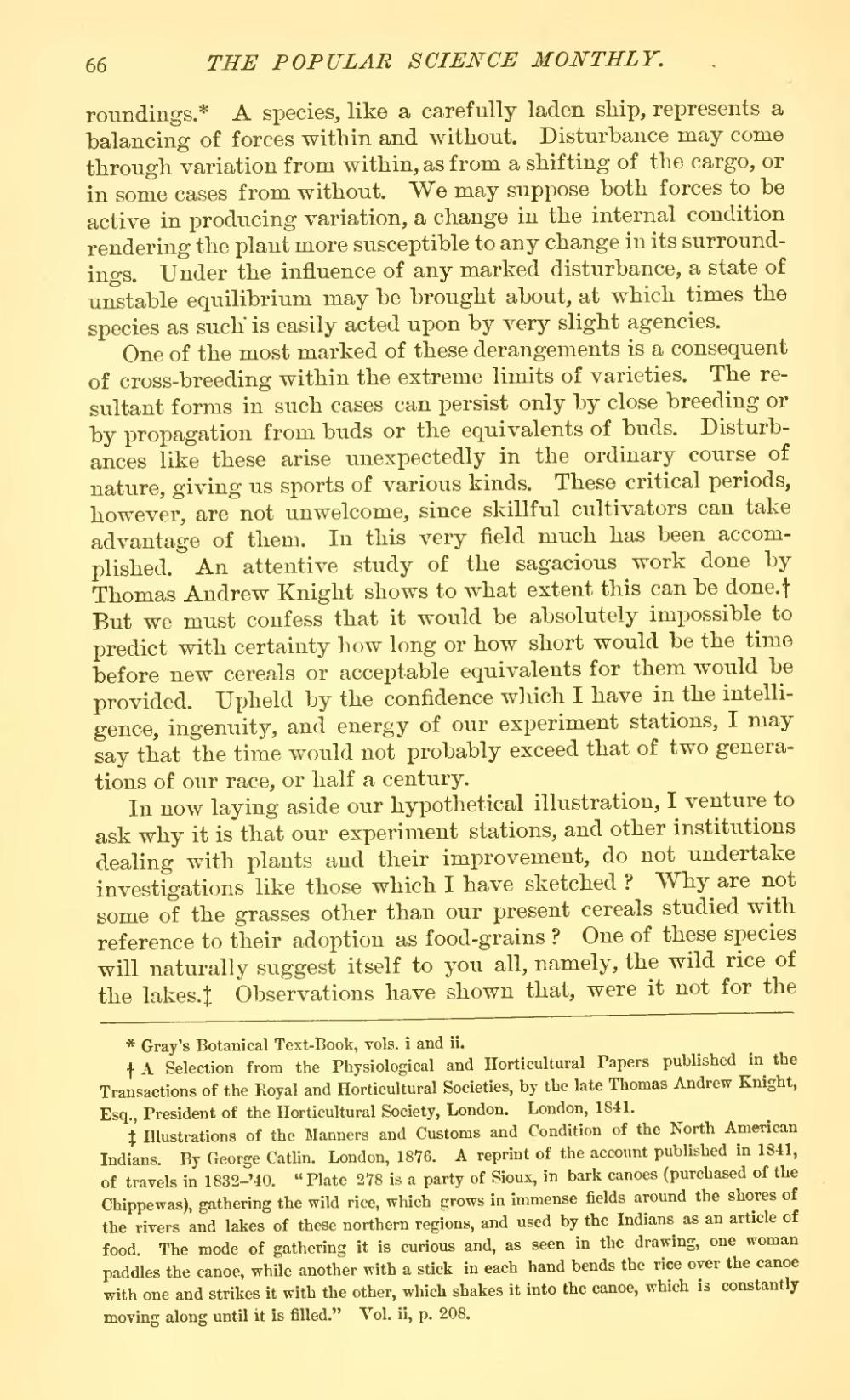roundings.[1] A species, like a carefully laden ship, represents a balancing of forces within and without. Disturbance may come through variation from within, as from a shifting of the cargo, or in some cases from without. We may suppose both forces to be active in producing variation, a change in the internal condition rendering the plant more susceptible to any change in its surroundings. Under the influence of any marked disturbance, a state of unstable equilibrium may be brought about, at which times the species as such is easily acted upon by very slight agencies.
One of the most marked of these derangements is a consequent of cross-breeding within the extreme limits of varieties. The resultant forms in such cases can persist only by close breeding or by propagation from buds or the equivalents of buds. Disturbances like these arise unexpectedly in the ordinary course of nature, giving us sports of various kinds. These critical periods, however, are not unwelcome, since skillful cultivators can take advantage of them. In this very field much has been accomplished. An attentive study of the sagacious work done by Thomas Andrew Knight shows to what extent this can be done.[2] But we must confess that it would be absolutely impossible to predict with certainty how long or how short would be the time before new cereals or acceptable equivalents for them would be provided. Upheld by the confidence which I have in the intelligence, ingenuity, and energy of our experiment stations, I may say that the time would not probably exceed that of two generations of our race, or half a century.
In now laying aside our hypothetical illustration, I venture to ask why it is that our experiment stations, and other institutions dealing with plants and their improvement, do not undertake investigations like those which I have sketched? Why are not some of the grasses other than our present cereals studied with reference to their adoption as food-grains? One of these species will naturally suggest itself to you all, namely, the wild rice of the lakes.[3] Observations have shown that, were it not for the
- ↑ Gray's Botanical Text-Book, vols, i and ii.
- ↑ A Selection from the Physiological and Horticultural Papers published in the Transactions of the Royal and Horticultural Societies, by the late Thomas Andrew Knight, Esq., President of the Horticultural Society, London. London, 1841.
- ↑ Illustrations of the Manners and Customs and Condition of the North American Indians. By George Catlin. London, 1876. A reprint of the account published in 1841, of travels in 1832-'40. "Plate 278 is a party of Sioux, in bark canoes (purchased of the Chippewas), gathering the wild rice, which grows in immense fields around the shores of the rivers and lakes of these northern regions, and used by the Indians as an article of food. The mode of gathering it is curious and, as seen in the drawing, one woman paddles the canoe, while another with a stick in each hand bends the rice over the canoe with one and strikes it with the other, which shakes it into the canoe, which is constantly moving along until it is filled." Vol. ii, p. 208.

